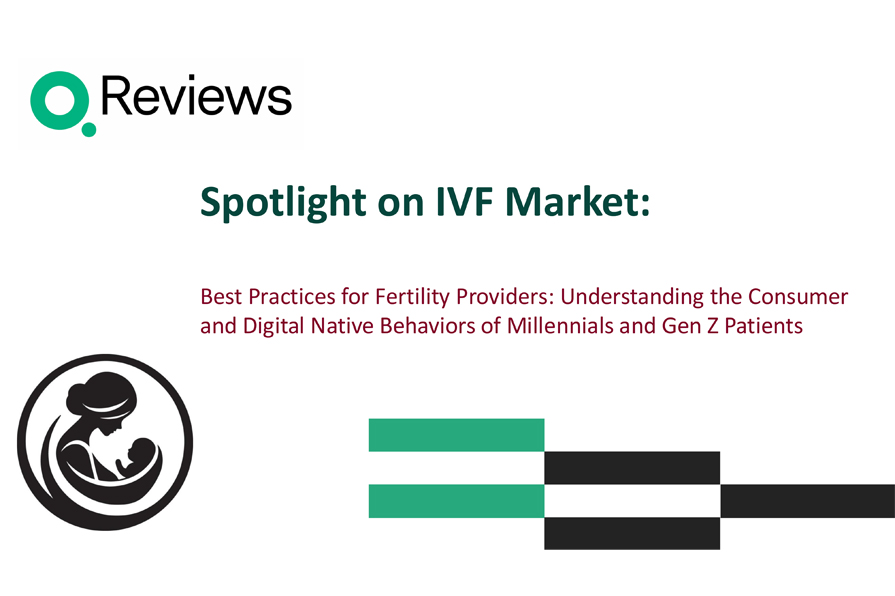
Millennial Healthcare: Trends of the Consumer Revolution

The healthcare industry has long focused on the patient experience of Baby Boomers and Gen X, but has only recently begun paying attention to millennials. As they grow older, millennials make up more and more of the patient population. And it has become clear that millennial healthcare preferences are significantly different than those of different generations — leading to a clear consumer revolution in healthcare.
Savvy healthcare organizations are doubling down on their efforts to understand and cater to the patient experience of their millennial clients. And there’s good reason to do so. Millennials now number 81.3 million in the United States, according to U.S. Census Bureau data. They are also now the largest generation in the U.S. labor force. What’s more, they’re the largest living adult generation in the country, according to the Pew Research Center.
The numbers don’t lie. Tuning into the patient experience wants and needs of millennials isn’t something you can put off until later. To keep your organization relevant, grow your revenue, and better serve your patients, you have to act now. So if you’re wondering what millennials want when it comes to healthcare, read on below.
What Millennials Want When It Comes to Healthcare Patient Experience
How Gen Y is shaping America’s $3.5 trillion healthcare industry
Millennials now have a huge influence on the market, and companies — including healthcare organizations — have taken notice. But just how are millennials changing healthcare? More than anything, they demand a patient experience shift toward consumer-oriented service.
One major characteristic of this consumer revolution in healthcare is convenience. 30% of millennials said they would use a walk-in clinic, more than twice as much as baby boomers (14%). Meanwhile, 40% of millennials said they were likely to consider telemedicine. Again, this was more than twice as much as baby boomers (19%). And the transition to virtual care after the COVID-19 pandemic has likely only increased this number.
Survey: Millennials more likely to use online healthcare cost-tracking tools `

Baby Boomer Healthcare vs. Millennial Healthcare
As a generation that has now gone through two major recessions, millennials are highly aware of their spending.
“Millennials are very financially aware, probably more so than any other generation before them because many of them came of age during the financial crisis and its aftermath,” says Kerim Derhalli, CEO of investor on Debt.com. “It’s important that they’re empowered to make smart financial decisions that prepare them for the future.”
And a growing focus on transparency has only fueled this trend. 28% of millennials said they would use online healthcare cost-tracking tools, compared to 17% of Gen Xers and 10% of Baby Boomers.
The bottom line? Millennials now expect transparency in healthcare pricing just as much as they do in retail.
In the age of smartphones, we use our mobile devices for just about everything. This includes banking, shopping, social media, and increasingly, healthcare. As a result, nearly three-quarters of millennials (71%) say they would like their provider to offer a patient experience app to help explain their care. Today, having a mobile app is no longer a differentiator for healthcare organizations — it’s expected.
Millennial Healthcare Best Practices
After seeing all of this information laid out, you might think that millennial patients are acting more and more like retail consumers — and you’d be right. All signs point to a consumer revolution in healthcare, something which is not likely to change anytime soon. Like it or not, healthcare organizations hoping to attract millennials must begin to view patients as customers.
To appeal to their audience, providers should incorporate patient experience preferences into every level of their organization. This includes everything from billing to technology, facilities, administration, human resources, and clinical decision-making. With so many different factors to consider, a millennial-led consumer revolution in healthcare may seem overwhelming. Encouraging frontline associates to adopt the following five strategies, though, is a great place to start:
The 5 Steps of Service Recovery
Listen
Nobody likes to feel overlooked, especially when it comes to something as important as their healthcare patient experience. Doctors, nurses, and other frontline healthcare employees should always offer a sympathetic ear to their patients, making sure to address their concerns with empathy and accommodate their preferences whenever possible. Even when there is no immediate resolution, patients want their concerns and opinions to be heard.
Offer a blameless apology
The things patients get frustrated about are often out of a provider’s control. One patient coming in late in the morning, for example, can throw off the schedule for the entire day. But immediately pointing fingers at somebody else can make it seem like you care more about defending yourself than addressing a patient’s complaint. Instead of coming up with excuses, apologize to the patient and acknowledge their concerns without placing the blame on someone or something else.
Offer to help
After you’ve apologized, it’s time to be proactive. If there’s a clear way you can resolve the issue — for example, immediately scheduling an appointment for a patient who’s had a hard time getting through to the receptionist — do so. If it’s not quite as clear-cut, you can always ask patients what you can do to make things right.
Follow through
As the saying goes, talk is cheap — proposing a solution without following through doesn’t mean much at all. Taking action, on the other hand, shows patients that you genuinely value them and respect their wants and needs. Try to do so as quickly as possible after speaking with the patient to make it clear that you’ve prioritized the issue.
Keep it professional
Dealing with unhappy patients can be difficult, but you should never resort to rudeness, insults, or sarcasm. A patient in need of healthcare is often stressed out by their circumstances, which can cause them to act out of character. They may also be dealing with issues you aren’t aware of. Whatever the context, treat your patients to show them that you’ll be there for them in up times and in down.
There’s no better way to find out what millennials want when it comes to their healthcare patient experience than to hear directly from them. That’s why we’ve made it easy for patients to provide real-time feedback in healthcare, and for providers to act on it. With our service recovery and daily performance improvement tools, healthcare leaders can shift the focus onto the patient and promote a culture of service excellence.
And in turn, your team will be empowered to meet the ever-growing healthcare expectations of your patients during today’s consumer revolution.
Interested in learning more?
For more information on how our real-time patient feedback and service recovery tools can help you enhance your patient experience, check out our products, request a demo, or reach out to us with any questions you might have.








